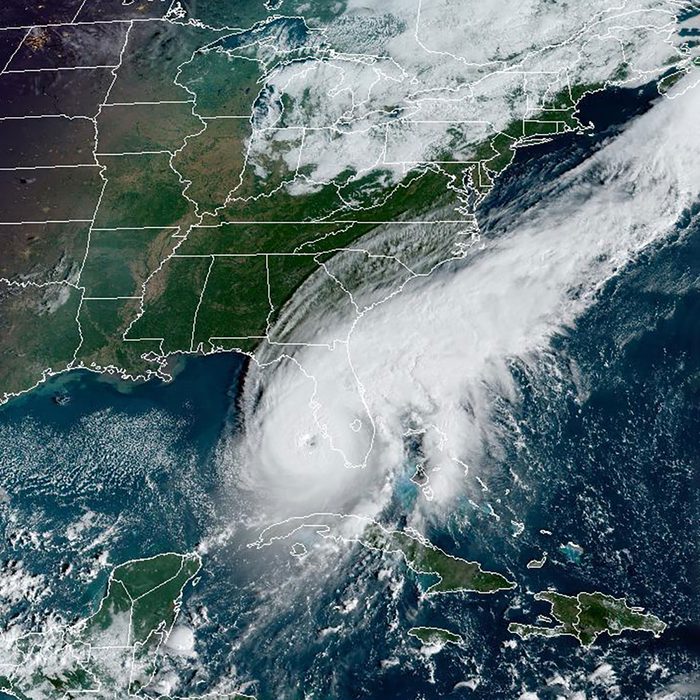When Is Hurricane Season?
Updated: Sep. 27, 2023

Late summer is the most dangerous time for these deadly storms. Know when the season starts and ends so you aren't caught off guard.
Late summer is the time for end-of-the-season trips and lazy days at the beach. It’s also hurricane season. August and September see more U.S. hurricanes than any other months. If you’re trying to squeeze in one more family vacation before sending the kids back to school, check weather forecasts so you don’t end up stranded by a hurricane.
On This Page
What Is Hurricane Season?
Hurricane season refers to the time of year that powerful storms, called tropical cyclones, form. “Cyclone” is a generic term for a system of wind and thunderstorms that rotates around an area of low pressure.
In the North Atlantic and East Pacific Oceans, cyclones are called hurricanes. In the West Pacific, they’re known as typhoons. If cyclones develop in the South Pacific or Indian Ocean, they’re just called cyclones. So the name you’re familiar with depends on where you live, but they’re all the same thing.
Most of the time, when you hear about “hurricane season” in the U.S., people are talking about the Atlantic season. That’s because of the way hurricanes form and move across the ocean.
When Atlantic tropical cyclones develop off the coast of Africa, they move west-northwest, taking aim at the Gulf and Eastern Coasts of the U.S. Pacific hurricanes also move west-northwest. But because they start off the coast of Mexico, that takes them out over the ocean toward Asia.
Does every rotating tropical storm become a hurricane or cyclone? No. Hurricanes only become hurricanes once wind speeds reach 74 mph. Then, once a hurricane forms, wind speed determines the storm’s severity.
The Saffir-Simpson Hurricane Wind Scale ranks the storms from Category 1, with sustained wind speeds of 74 to 95 mph, to Category 5, with winds hitting 157 mph and up.
When Is Hurricane Season in the U.S.?
The Atlantic hurricane season runs from June 1 to November 30. The Pacific hurricane season, which occasionally affects the West Coast of the U.S., starts two weeks earlier, on May 15, and also ends on November 30.
The vast majority of U.S. hurricanes hit the Gulf and East Coast. But as the recent Hurricane Hilary showed, California and other Western states are not immune to these powerful storms.
When hurricane season starts
Ninety-seven percent of Atlantic storms come after June 1. According to the National Hurricane Center, the first named storm typically forms in mid-to-late June. It receives a name when it reaches wind speeds of 39 mph, before it becomes a hurricane.
Before the early 1950s storms were described by the year, which got confusing when more than one developed at the same time. Currently, the World Meteorological Organization controls the naming of tropical storms and hurricanes.
Hurricane season peak
By the time late summer rolls around, hurricane season is in full swing. The U.S. sees the most hurricanes from mid-August through mid-October, with the official peak on September 10, according to the National Hurricane Center. The first hurricane as well as the first major one — defined as a Category 3 or higher — usually form during this period.
When does hurricane season end?
Though technically November 30, as mentioned above, it’s not unheard of for a hurricane to form in December. Multiple named storms have developed in December, but the last one to grow into a hurricane was Epsilon, in 2005 — a particularly deadly year for hurricanes, which included Katrina and Rita. Most off-season hurricanes happen in May.
Hurricane Preparedness
Most hurricanes in the U.S. make landfall in Gulf and East Coast states of Florida, Texas, Louisiana, North Carolina and South Carolina. But Mississippi, Alabama, Georgia and even New York get their fair share. Basically, anywhere on the East Coast is ripe for these tropical systems to make landfall.
Preparing for a hurricane is a year-round endeavor. Don’t wait until there’s one in the forecast or, worse, headed your way to get your house and escape plan in order.
Tom Gissler, president of Restoration 1, offers these important tips for staying safe:
- Create an emergency plan. Practice your route if you need to flee the storm, and establish a designated meeting place if you get separated.
- Secure important documents and have lists of emergency contacts.
- Identify a safe room where you can ride out the storm, if needed.
- Check and repair your roof and gutters. Trim trees and secure items in your yard that could become airborne.
- Secure windows and basements to prevent flooding and water damage.
- Stock up on supplies. Have at least three days worth of food and water on hand in your emergency kit.
- Prepare for your pets, too. Have food, medicine and carriers ready. Make sure they’re microchipped.
- Purchase an emergency radio and tune in to NOAA Weather Radio. Evacuate when told to do so.
